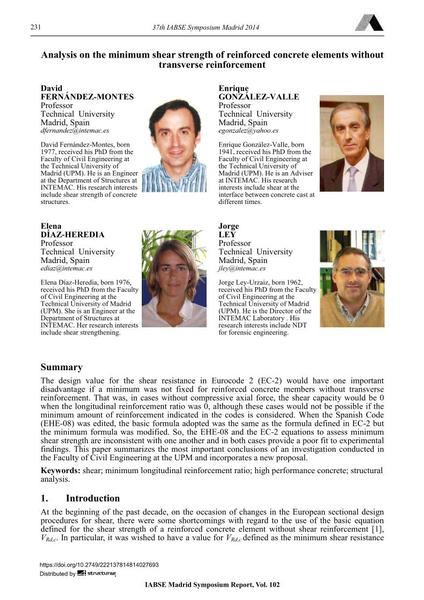Analysis on the minimum shear strength of reinforced concrete elements without transverse reinforcement

|
|
|||||||||||
Bibliographic Details
| Author(s): |
David Fernández-Montes
Enrique González-Valle Elena Díaz-Heredia Jorge Ley |
||||
|---|---|---|---|---|---|
| Medium: | conference paper | ||||
| Language(s): | English | ||||
| Conference: | IABSE Symposium: Engineering for Progress, Nature and People, Madrid, Spain, 3-5 September 2014 | ||||
| Published in: | IABSE Symposium Madrid 2014 | ||||
|
|||||
| Page(s): | 231-238 | ||||
| Total no. of pages: | 8 | ||||
| Year: | 2014 | ||||
| DOI: | 10.2749/222137814814027693 | ||||
| Abstract: |
The design value for the shear resistance in Eurocode 2 (EC-2) would have one important disadvantage if a minimum was not fixed for reinforced concrete members without transverse reinforcement. That was, in cases without compressive axial force, the shear capacity would be 0 when the longitudinal reinforcement ratio was 0, although these cases would not be possible if the minimum amount of reinforcement indicated in the codes is considered. When the Spanish Code (EHE-08) was edited, the basic formula adopted was the same as the formula defined in EC-2 but the minimum formula was modified. So, the EHE-08 and the EC-2 equations to assess minimum shear strength are inconsistent with one another and in both cases provide a poor fit to experimental findings. This paper summarizes the most important conclusions of an investigation conducted in the Faculty of Civil Engineering at the UPM and incorporates a new proposal. |
||||
| Keywords: |
structural analysis shear high performance concretes HPCs minimum longitudinal reinforcement ratio
|
||||
